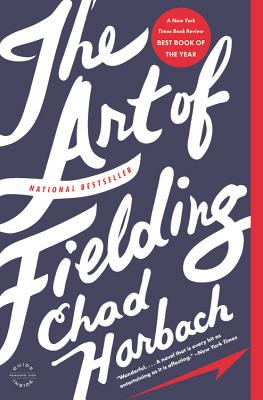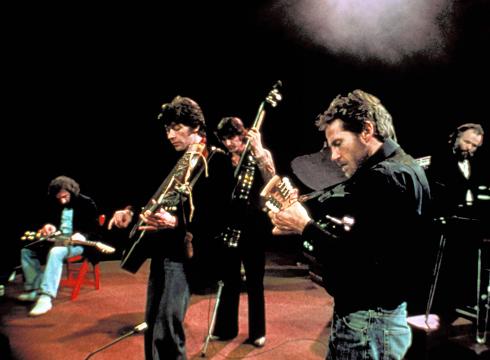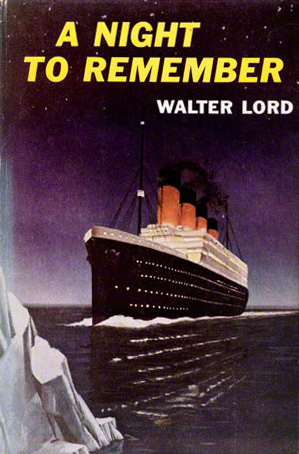Subscribe by Email
-
Recent Posts
Monthly Archives: April 2012
The Art of Fielding

With the opening of baseball season, I sought out “The Art of Fielding” as my next read. I have long been an avid follower of America’s pastime and once worshipped Cincinnati’s Big Red Machine circa 1973 to 1979. The team’s catcher Johnny Bench is still my all-time baseball hero. So I was psyched to pick up Chad Harbach’s debut novel, which I knew just two things about: (a) that it was about baseball and (b) that it had made the New York Times 10 best books of 2011 list: a combination of which definitely piqued my interest.
But I didn’t realize “The Art of Fielding” would be a long, sprawling novel of 512 pages nor did I know its storyline, characters, or the gay and straight relationships within. I went in blind and was rewarded with a very entertaining and heartfelt read. It enticed me with its strong sense of place of a Midwestern college campus and main characters who I felt entwined to by the end to the point that I’d miss them when all was said and done.
Many probably know, the novel’s about a baseball star shortstop named Henry Skrimshander who’s recruited and mentored to play at a small college along the shores of Lake Michigan. On the field, Henry is as good as gold, tying the record for innings without an error and catching the attention of major league scouts; that is until one game a throw gets wildly away from him and beans a teammate, forever affecting the fates of five people. There’s Henry, who loses his way amid self-doubt and team captain Mike Schwartz, who’s mentored Henry at the expense of himself; and college president Guert Affenlight, a Melville scholar, who finds himself falling dangerously in love with a student, Owen Dunne, who’s Henry’s gay roommate; and finally Pella Affenlight, Guert’s daughter, who returns to the college town to start again after a failed marriage.
It’s a coming of age story primarily about male relationships and friendships, and about love and loss. It’s considerably more than just a baseball story (you don’t necessarily need to be a baseball fan to enjoy it), though the sports writing in the book is quite impressive. Author Chad Harbach definitely knows the sights, sounds and feelings around a baseball diamond, and pursues the mental aspects, as well as the blood, sweat and tears an athlete goes through with great insight. The novel is quite dark at points as the main characters all seem to be going through a tipping point or break down at the same time. It’s likely your college anxieties will resurface as you speed through “The Art of Fielding” hoping for a brighter day for Henry, Schwartzy, Guert and Pella. I also enjoyed the school’s connection to Herman Melville, which the author creatively conjures toward the beginning of the novel.
You won’t soon forget this book as it breathes considerably life into its scenes. You go through a lot amid its 512 pages, rising and falling with its cast. And though it’s long, it’s a fast, breezy read that keeps you coming back (though you might not like some things that happen) until its final conclusion plays out. Kudos to Chad Harbach for his engaging debut hit, which apparently has been optioned by HBO in the hope of turning it into a series. Continue reading
Posted in Books
10 Comments
In Memoriam

Levon Helm (1940-1912) with The Band; a sad day losing such a legend in music.
No matter how many times I listen to The Band’s music or see the concert film “The Last Waltz,” (which I did again last night), I can’t seem to shake my focus from Helm’s voice and his playing and how he infused the music with so much. His singing on “Up on Cripple Creek,” “The Weight,” “Ophelia” and “The Night They Drove Old Dixie Down” is simply magical and forever near the top in the annals of rock-n-roll.
For two fascinating interviews with Levon, check out the 1993 and 2007 talks he had with NPR’s Fresh Air here. Continue reading
Posted in Music
2 Comments
A Night to Remember

It was a hundred years ago last night at 2:20 a.m. the RMS Titanic sank after hitting an iceberg at 11:40 p.m. It’s humbling and shocking even now, thinking of the world’s biggest, fastest ship up to that point (deemed “unsinkable”) and more than 1,500 of its passengers disappearing on its maiden voyage into the icy waters of the North Atlantic. Titanic’s story is one so visual now to our imaginations, as if it were engraved into our DNA. It’s long since taken on mythological proportions.
With its 100th anniversary, I couldn’t help but take the plunge into the massive coverage of all things Titanic. I’ve seen a few Titanic TV specials recently: one on its engine room staff that worked so hard to keep the lights on; another on the iceberg that hit it; another on James Cameron’s analysis of the underwater wreck site that was found in 1985; and finally the 1958 film “A Night to Remember,” which is taken from this book of the same name.
But there’s so much more on Titanic: new research, new books, new theories; all recently banking on the 100th anniversary. But what intrigued me was to go back to the very first book on it, Walter Lord’s classic “A Night to Remember” from 1955. After all, I had never read it before this.
Indeed it is a great source for what happened on the night of April 14-15, 1912. As Lord wrote: “This book is really about the last night of a small town.” And for sure, Titanic was that big and carried that many people. It was like a microcosm of Edwardian society, with cabins and luxuries designated by class, and women and children given first seats on the lifeboats. Never again would the world be quite like this in such circumstances.
“A Night to Remember” reads as if the action were happening right then and there, making it quite dramatic as the tragedy unfolds. From the late sighting of the iceberg, to the damage assessment, call to lifeboats, distress signals, eventual sinking and freezing rescue, Lord pieces together such a vivid picture, strengthened by the 63 survivors he spoke to in writing the book. The quotes of conversations he uses, which enliven the account, are not made up but are amazingly given as remembered by survivors.
“Night” reads a bit like a Jon Krakauer book. And indeed, Walter Lord was one of the first writers to bring journalistic narrative to history, which we are so much better for. The book’s not weighed down with a lot of documentation, speculation or background (for that there are many others), but it briskly recounts in an organized, accurate way what happened and when on that fateful night and the many colorful people involved and lost. Interesting roles are played by Captain Edward John Smith, Titanic’s builder Thomas Andrews, ocean liner president Bruce Ismay, Fifth Officer Harold Lowe (who went back to pick up survivors) and Second Officer Charles Lightoller who survived by balancing with others on an overturned collapsible lifeboat.
After the ship went down, it’s amazing that some of the passengers were able to swim to a couple of these collapsible boats in the 28-degree Fahrenheit water and somehow survive until the rescue ship picked them up a few hours later. “Night” conjures scenes like these that you won’t believe and won’t be able to forget. It makes you wish you could change all the little circumstances that led up to the disaster: if only the Titanic weren’t going so fast through an ice field on a moonless night, or if only they saw the iceberg sooner, or if only the ship the Californian 10 miles away came to their distress, or if only they loaded the lifeboats with more people — or, or, or ….
It’s a great book that can do all that. My only wish is perhaps that author Walter Lord had written an afterword on it that went into the disaster’s hearings a bit. Some of the survivors’ testimony would have been quite interesting, too. But still “A Night to Remember” is quite a night, and there’s more interesting details in Lord’s book “The Night Lives On” from 1986. Sadly he died in 2002, but not before consulting on that other Titanic movie you might have heard of. Apparently Lord once crossed the Atlantic on the RMS Olympic, the Titanic’s sister ship in 1926. So perhaps that is where he got his zest for capturing such a sea story.
If you happen to see the 1958 film of it, which you should, watch for Sean Connery, apparently he is amid the chaos as a deck crewman. Continue reading
Posted in Books
4 Comments
The Solitude of Prime Numbers

“The Solitude of Prime Numbers” was a pick from my book club, which I wasn’t expecting to like, though actually I didn’t know anything about. But like a moth to a flame I was completely drawn in by this sad, moving novel from 2008. Chalk it up to author Paolo Giordano’s talented storytelling, which captured my imagination and made me follow these damaged characters with such interest.
It’s a love tale of sorts between two lonely outcasts who are both haunted by childhood tragedies. The girl, Alice, lives with a crippled leg from a ski accident and a bullying father. The gifted boy, Mattia, carries the guilt of abandoning his mentally challenged twin sister who disappears and is never found. Alice and Mattia meet in high school, where they sense in each other a kindred spirit of inner pain. He deals with it by cutting himself, she by being anorexic.
To Mattia, who later becomes a mathematician, he and Alice are like twin prime numbers, “alone and lost, close but not close enough to really touch each other.” They separate when he accepts a research job in another country and she marries a local doctor, leaving issues between them unresolved. But many years later they resurface when their paths cross again.
The ending that follows is a bit inevitable but a surprise all the same. The novel leaves quite an impact long after it is over. I found it a quick read with an underlying suspensefulness that made me keep turning the pages. Its often beautiful passages and clever use of math metaphors are quite transcendent.
I was lucky to come across the author (an Italian physicist) in 2010 at a book festival where he read aloud the chapter in which the twin sister goes missing. I remember it being quite disturbing and yet visual. I thought what is this? And now I know. “The Solitude of Prime Numbers” is a small tour de force on the weight of childhood trauma, love, and loneliness. Apparently it was made into a movie in Italy in September 2010. Continue reading
Posted in Books
2 Comments
